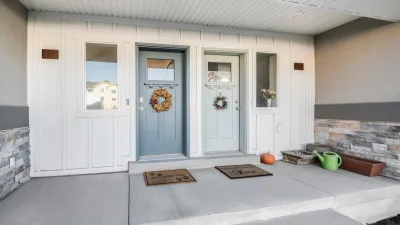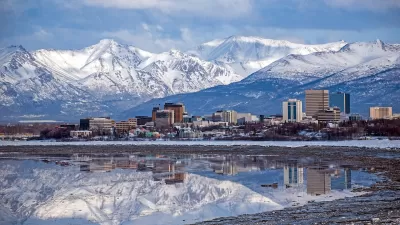Changes in the size and type of housing can accommodate different living arrangements and offer opportunities for multigenerational living and aging in place.

Writing in Strong Towns, Emma Durand-Wood makes the argument that changes in neighborhood scale aren’t always the tragedy that some community activists say they are.
Durand-Wood points to her childhood neighborhood as an example, where houses slowly began growing in size until the larger size became the norm. Now, more property owners and developers are building larger houses designed for multigenerational living, co-living, or renting out extra spaces to tenants.
For Durand-Wood, the change is a response to shifting needs. “In Canada, multigenerational households have increased in number by 50% since 2001. In the United States, the share of the U.S. population in multigenerational homes has more than doubled, from 7% in 1971 to 18% in 2021.”
Durand-Wood calls on planners and local governments to encourage the construction of multigenerational housing as well as multifamily buildings in new and existing neighborhoods, writing, “Neighborhoods must be permitted to evolve and change” to meet the changing needs of an aging population.
FULL STORY: The Monster House: Why a Change in Neighborhood Scale Isn’t a Bad Thing

Alabama: Trump Terminates Settlements for Black Communities Harmed By Raw Sewage
Trump deemed the landmark civil rights agreement “illegal DEI and environmental justice policy.”

Planetizen Federal Action Tracker
A weekly monitor of how Trump’s orders and actions are impacting planners and planning in America.

The 120 Year Old Tiny Home Villages That Sheltered San Francisco’s Earthquake Refugees
More than a century ago, San Francisco mobilized to house thousands of residents displaced by the 1906 earthquake. Could their strategy offer a model for the present?

Ken Jennings Launches Transit Web Series
The Jeopardy champ wants you to ride public transit.

BLM To Rescind Public Lands Rule
The change will downgrade conservation, once again putting federal land at risk for mining and other extractive uses.

Indy Neighborhood Group Builds Temporary Multi-Use Path
Community members, aided in part by funding from the city, repurposed a vehicle lane to create a protected bike and pedestrian path for the summer season.
Urban Design for Planners 1: Software Tools
This six-course series explores essential urban design concepts using open source software and equips planners with the tools they need to participate fully in the urban design process.
Planning for Universal Design
Learn the tools for implementing Universal Design in planning regulations.
Clanton & Associates, Inc.
Jessamine County Fiscal Court
Institute for Housing and Urban Development Studies (IHS)
City of Grandview
Harvard GSD Executive Education
Toledo-Lucas County Plan Commissions
Salt Lake City
NYU Wagner Graduate School of Public Service





























